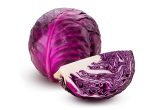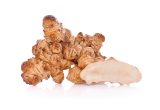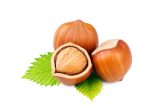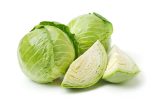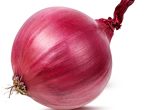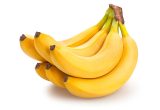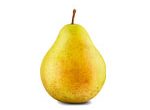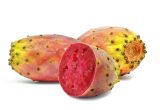Orange

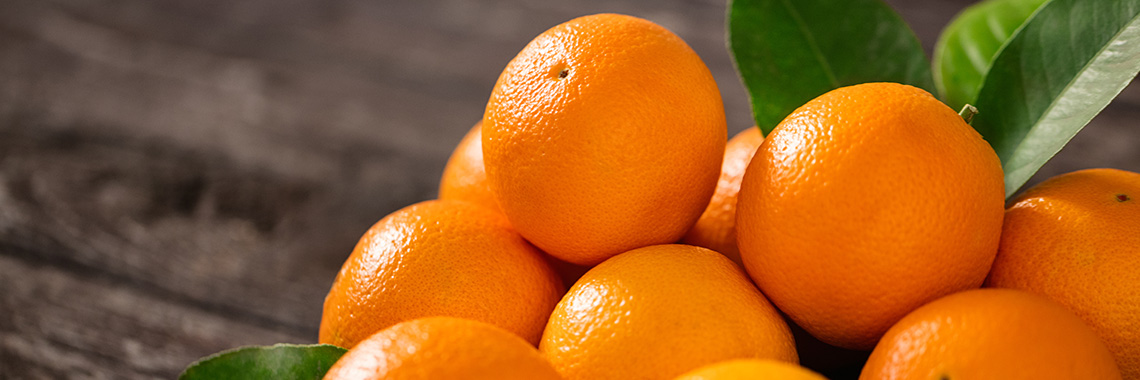
Description
- The orange tree (Citrus aurantium) belongs to the Rutaceae family.
- There are two main varieties of orange: the bitter orange and the sweet orange (Sarrou, 2013).
- The genus Citrus includes a number of fruits, such as lemon, orange, mandarin, grapefruit, etc. (Jabri Karoui, 2013).
- Citrus is one of the most widely grown fruits in the world, accounting for over 80 million tonnes per year (Jabri Karoui, 2013).
- Oranges grow in tropical and subtropical regions. Turkey’s citrus production is one of the largest in the Mediterranean basin (Polat, 2012).
PHYSICAL AND ORGANOLEPTIC CHARACTERISTICS
- Carotenoids, including violaxanthin, β-cryptoxanthin, β-carotene, lutein, zeaxanthin and α-carotene, are thought to be the main pigments in oranges (Gao, 2019).
- Ethyl butanoate, ethyl 2-methylbutanoate, octanal, decanal and acetaldehyde are believed to be essential compounds for orange aroma (Feng, 2018).
- The acidity of the orange increases during the second stage of development, called “fruit enlargement”, and then decreases during the third and final stage, called “fruit ripening”. Variations in total soluble sugars differ from those in acidity, with a slight increase during the ripening phase (Khefifi, 2020).
- The ratio of total soluble sugars to acidity is the main indicator of fruit maturity and is generally used to select the harvest period (Khefifi, 2020).
- Ripening of oranges is impacted by environmental factors such as humidity, light and temperature (Khefifi, 2020).
COMPOSITION CHARACTERISTICS (excluding macronutrients, vitamins and minerals)
- Orange contains p-synephrine, a proto-alkaloid that exhibits beneficial effects on athletic performance, appetite control, energy, mental focus and cognition (Stohs, 2017).
- Its richness in vitamin C, folic acid and flavonoids such as hesperidin and naringenin, gives orange juice antioxidant and anti-inflammatory properties and is believed to prevent cardiovascular disease, diabetes-related insulin resistance and metabolic syndrome (Ye, 2017).
- Vitamin C is thought to improve respiratory infections, psoriasis, allergies, asthma and arthritis (Ye, 2017).
RAW
The following values are approximate and depend on variety, season, ripeness, cultivation conditions, etc.
Oranges provide on average 45.50 calories (kcal) per 100 g, i.e. 192 kJ. One orange weighs on average 200 g, which represents an energy intake of 86 kcal.
COMPOSITION TABLES
For each nutrient, the tables provide information on the content, minimum and maximum values, as well as the percentage of the Dietary Reference Values (DRVs) per 100 g net of orange (pulp).
MACRONUTRIENTS
| Constituent (g) | Average content |
Min-Max per 100g |
DRV% |
|---|---|---|---|
| Water | 87,30 | 83,70 - 91,70 | - |
| Fibers | 2,70 | 1,40 - NC | - |
| Carbohydrates | 8,03 | 7,70 - 9,50 | 3,09 |
| Sugars | 7,60 | NC - 9,35 | 8,44 |
| Lipids | < 0,50 | 0,12 - 0,70 | - |
| Saturated fat | < 0,01 | NC - 0,12 | - |
| Protein | 0,75 | 0,10 - 1,25 | 1,50 |
| Constituent (g) | Amount | Min-Max | DRV% |
|---|---|---|---|
| Water | Ciqual 2020 (valeur issue des analyses Ciqual-Aprifel 2017) | - | - |
| Fibers | Ciqual 2020 (valeur issue des analyses Ciqual-Aprifel 2017) | - | - |
| Carbohydrates | Ciqual 2020 | - | Règlement (UE) N°1169/2011 du parlement Européen et du conseil du 25 octobre 2011 |
| Sugars | Ciqual 2020 (valeur issue des analyses Ciqual-Aprifel 2017) | - | Règlement (UE) N°1169/2011 du parlement Européen et du conseil du 25 octobre 2011 |
| Lipids | Ciqual 2020 (valeur issue des analyses Ciqual-Aprifel 2017) | - | Règlement (UE) N°1169/2011 du parlement Européen et du conseil du 25 octobre 2011 |
| Saturated fat | Ciqual 2020 (valeur issue des analyses Ciqual-Aprifel 2017) | - | Règlement (UE) N°1169/2011 du parlement Européen et du conseil du 25 octobre 2011 |
| Protein | Ciqual 2020 (valeur issue des analyses Ciqual-Aprifel 2017) | - | Règlement (UE) N°1169/2011 du parlement Européen et du conseil du 25 octobre 2011 |
Zoom on carbohydrates
- Apart from water, carbohydrates are the major components of oranges with a content of 8.03 g per 100 g.
- However, this amount is still below the average quantity found in fresh fruit (11.31 g per 100 g).
- These are mainly sucrose (3.50 g per 100 g), fructose (2.10 g per 100 g) and glucose (2 g per 100 g)
Zoom on fibres
- Oranges contain a significant amount of fibre (2.70 g per 100 g).
- This amount is almost equal to the average quantity found in fresh fruit (2.77 g per 100 g).
Zoom on proteins
- The protein content of oranges (0.75 g per 100 g) is lower than the average protein quantity found in fresh fruit (0.93 g per 100 g).
Zoom on lipids
- Oranges are fat-free* as they contain less than 0.5 g per 100 g.
*Regulation (EC) No 1924/2006 of the European Parliament and of the Council of 20 December 2006 on nutrition and health claims made on foods.
MINERALS AND TRACE ELEMENTS
| Constituent | Average content |
Min-Max per 100g |
DRV% |
|---|---|---|---|
| Calcium (mg) | 66 | 24,10 - NC | 8,25 |
| Chloride (mg) | < 20 | - | - |
| Copper (mg) | 0,04 | 0,033 - 0,07 | 4 |
| Iron (mg) | 0,57 | 0,07 - NC | 4,07 |
| Iodine (µg) | < 20 | 0,30 - NC | - |
| Magnesium (mg) | 15 | 8,63 - NC | 4 |
| Manganese (mg) | 0,02 | NC - 0,051 | 1 |
| Phosphorus (mg) | 38 | 14 - NC | 5,43 |
| Potassium (mg) | 180 | 111 - 202 | 9 |
| Selenium (µg) | < 20 | 0,05 - NC | - |
| Sodium (mg) | < 5 | 1,25 - NC | - |
| Zinc (mg) | 0,25 | 0,041 - NC | 2,50 |
| Constituent | Amount | Min-Max | DRV% |
|---|---|---|---|
| Calcium (mg) | Ciqual 2020 (valeur issue des analyses Ciqual-Aprifel 2017) | - | Règlement (UE) N°1169/2011 du parlement Européen et du conseil du 25 octobre 2011 |
| Chloride (mg) | Ciqual 2020 (valeur issue des analyses Ciqual-Aprifel 2017) | - | Règlement (UE) N°1169/2011 du parlement Européen et du conseil du 25 octobre 2011 |
| Copper (mg) | Ciqual 2020 (valeur issue des analyses Ciqual-Aprifel 2017) | - | Règlement (UE) N°1169/2011 du parlement Européen et du conseil du 25 octobre 2011 |
| Iron (mg) | Ciqual 2020 (valeur issue des analyses Ciqual-Aprifel 2017) | - | Règlement (UE) N°1169/2011 du parlement Européen et du conseil du 25 octobre 2011 |
| Iodine (µg) | Ciqual 2020 (valeur issue des analyses Ciqual-Aprifel 2017) | - | Règlement (UE) N°1169/2011 du parlement Européen et du conseil du 25 octobre 2011 |
| Magnesium (mg) | Ciqual 2020 (valeur issue des analyses Ciqual-Aprifel 2017) | - | Règlement (UE) N°1169/2011 du parlement Européen et du conseil du 25 octobre 2011 |
| Manganese (mg) | Ciqual 2020 (valeur issue des analyses Ciqual-Aprifel 2017) | - | Règlement (UE) N°1169/2011 du parlement Européen et du conseil du 25 octobre 2011 |
| Phosphorus (mg) | Ciqual 2020 (valeur issue des analyses Ciqual-Aprifel 2017) | - | Règlement (UE) N°1169/2011 du parlement Européen et du conseil du 25 octobre 2011 |
| Potassium (mg) | Ciqual 2020 (valeur issue des analyses Ciqual-Aprifel 2017) | - | Règlement (UE) N°1169/2011 du parlement Européen et du conseil du 25 octobre 2011 |
| Selenium (µg) | Ciqual 2020 (valeur issue des analyses Ciqual-Aprifel 2017) | - | Règlement (UE) N°1169/2011 du parlement Européen et du conseil du 25 octobre 2011 |
| Sodium (mg) | Ciqual 2020 (valeur issue des analyses Ciqual-Aprifel 2017) | - | - |
| Zinc (mg) | Ciqual 2020 (valeur issue des analyses Ciqual-Aprifel 2017) | - | Règlement (UE) N°1169/2011 du parlement Européen et du conseil du 25 octobre 2011 |
Zoom on minerals and trace elements
- Oranges provide the equivalent of:
- 9% of DRVs for potassium, i.e. 180 mg per 100 g;
- 8.25% of DRVs for calcium, i.e. 66 mg per 100 g.
- The other minerals and trace elements are present in quantities representing less than 6% of DRVs.
VITAMINS
| Constituent | Average content |
Min-Max per 100g |
DRV% |
|---|---|---|---|
| Provitamin A Beta-carotene (µg) | < 5 | NC - 237 | - |
| Vitamin A equivalent (µg) | < 0,83 | NC - 39,50 | - |
| Vitamin B1 (mg) | 0,045 | NC - 0,13 | 4,09 |
| Vitamin B2 (mg) | < 0,01 | NC - 0,04 | - |
| Vitamin B3 (mg) | 0,37 | 0,25 - 0,38 | 2,31 |
| Vitamin B5 (mg) | 0,16 | NC - 0,25 | 2,67 |
| Vitamin B6 (mg) | < 0,01 | NC - 0,13 | - |
| Vitamin B9 (µg) | 25,90 | 25 - 89 | 12,95 |
| Vitamin C (mg) | 47,50 | NC - 60,80 | 59,38 |
| Vitamin E (mg) | 0,19 | 0,14 - 0,95 | 1,58 |
| Vitamin K1 (µg) | < 0,80 | 1 - NC | - |
| Constituent | Amount | Min-Max | DRV% |
|---|---|---|---|
| Provitamin A Beta-carotene (µg) | Ciqual 2020 (valeur issue des analyses Ciqual-Aprifel 2017) | - | - |
| Vitamin A equivalent (µg) | Calcul à partir de la valeur Provitamine A Béta-carotène* | - | Règlement (UE) N°1169/2011 du parlement Européen, et du conseil du 25 octobre 2011 |
| Vitamin B1 (mg) | Ciqual 2020 (valeur issue des analyses Ciqual-Aprifel 2017) | - | Règlement (UE) N°1169/2011 du parlement Européen et du conseil du 25 octobre 2011 |
| Vitamin B2 (mg) | Ciqual 2020 (valeur issue des analyses Ciqual-Aprifel 2017) | - | Règlement (UE) N°1169/2011 du parlement Européen et du conseil du 25 octobre 2011 |
| Vitamin B3 (mg) | Ciqual 2020 (valeur issue des analyses Ciqual-Aprifel 2017) | - | Règlement (UE) N°1169/2011 du parlement Européen et du conseil du 25 octobre 2011 |
| Vitamin B5 (mg) | Ciqual 2020 (valeur issue des analyses Ciqual-Aprifel 2017) | - | Règlement (UE) N°1169/2011 du parlement Européen et du conseil du 25 octobre 2011 |
| Vitamin B6 (mg) | Ciqual 2020 (valeur issue des analyses Ciqual-Aprifel 2017) | - | Règlement (UE) N°1169/2011 du parlement Européen et du conseil du 25 octobre 2011 |
| Vitamin B9 (µg) | Ciqual 2020 (valeur issue des analyses Ciqual-Aprifel 2017) | - | Règlement (UE) N°1169/2011 du parlement Européen et du conseil du 25 octobre 2011 |
| Vitamin C (mg) | Ciqual 2020 (valeur issue des analyses Ciqual-Aprifel 2017) | - | Règlement (UE) N°1169/2011 du parlement Européen et du conseil du 25 octobre 2011 |
| Vitamin E (mg) | Ciqual 2020 (valeur issue des analyses Ciqual-Aprifel 2017) | - | Règlement (UE) N°1169/2011 du parlement Européen et du conseil du 25 octobre 2011 |
| Vitamin K1 (µg) | Ciqual 2020 (valeur issue des analyses Ciqual-Aprifel 2017) | - | Règlement (UE) N°1169/2011 du parlement Européen et du conseil du 25 octobre 2011 |
Zoom on vitamins
- Oranges are high in vitamin C as they provide the equivalent of 59.38% of DRVs, i.e. 47.50 mg per 100 g.
- Their vitamin B9 content is also notable. They provide the equivalent of 12.95% of DRVs, i.e. 25.90 µg per 100 g.
- The amount of other vitamins represents less than 5% of DRVs.
*Calculation made: Beta Carotene / 6 + retinol
POLYPHENOLS
| Constituent (mg) | Average content |
Min-Max per 100mg |
|---|---|---|
| Flavonoids (mg) | 44,92 | 42 - 53,80 |
| of which Flavonols (mg) | 0,10 | 0 - 50 |
| of which Flavanones (mg) | 44,82 | 42 - 53,30 |
| Lignanes (mg) | 3,93 | 0,064 - 8,01 |
| Total polyphenols | 48,85 | 42,06 - 61,81 |
| Constituent (mg) | Amount | Min-Max |
|---|---|---|
| Flavonoids | Phénol-Explorer version 3.6 Méthode utilisée : Chromatographie après hydrolyse | - |
| of which Flavonols | Phénol-Explorer version 3.6 Méthode utilisée : Chromatographie après hydrolyse | - |
| of which Flavanones | Phénol-Explorer version 3.6 Méthode utilisée : Chromatographie après hydrolyse | - |
| Lignanes | Phénol-Explorer version 3.6 Méthode utilisée : Chromatographie après hydrolyse | - |
| Total polyphenols | Phénol-Explorer version 3.6 Méthode utilisée : Chromatographie après hydrolyse | - |
Zoom on polyphenols
- Polyphenols are substances with an antioxidant effect.
- Flavanones belonging to the flavonoid family are predominantly present in orange composites, accounting for 91.80% of total polyphenols identified.
- The rest of the polyphenols are represented at 8% by lignans and at 0.20% by flavonols.
Nutrition and health claims
According to the definitions of nutrition claims as set out in Regulation (EC) No 1924/2006 on nutrition and health claims, and in view of the composition of oranges, the following claims may be used:
NUTRITION CLAIMS OF ORANGES
- Fat-free (100 g of orange contain less than 0.5 g of fat)
- High in vitamin C (100 g of orange provide more than 30% of DRVs)
HEALTH CLAIMS (for a consumption of 100 g of orange)
Vitamin C
- Vitamin C contributes to:
- normal function of the immune system during and after intense physical exercise,
- normal collagen formation for the normal function of blood vessels,
- normal collagen formation for the normal function of bones,
- normal collagen formation for the normal function of cartilage,
- normal collagen formation for the normal function of gums,
- normal collagen formation for the normal function of skin,
- normal collagen formation for the normal function of teeth,
- normal energy-yielding metabolism,
- normal functioning of the nervous system,
- normal psychological function,
- normal function of the immune system,
- protection of cells from oxidative stress,
- reduction of tiredness and fatigue,
- regeneration of the reduced form of vitamin E.
- Vitamin C increases iron absorption.
References
- Agence nationale de sécurité sanitaire de l’alimentation, de l’environnement et du travail. Table de composition nutritionnelle des aliments Ciqual 2020. Consultée le 13/08/2020 depuis le site internet Ciqual https://ciqual.anses.fr/
- Barreca D, Gattuso G, Bellocco E, Calderaro A, Trombetta D, Smeriglio A, et al. Flavanones: Citrus phytochemical with health-promoting properties. BioFactors. 2017;43(4): 495–506.
- Feng S, Suh J, Gmitter F, Wang Y. Differentiation between Flavors of Sweet Orange (Citrus sinensis) and Mandarin (Citrus reticulata). Journal of agricultural and food chemistry. 2018;66: 203–211.
- Gao Y, Liu Y, Kan C, Chen M, Chen J. Changes of peel color and fruit quality in navel orange fruits under different storage methods. Scientia Horticulturae. 2019;256: 108522.
- Jabri Karoui I, Marzouk B. Characterization of bioactive compounds in Tunisian bitter orange (Citrus aurantium L.) peel and juice and determination of their antioxidant activities. Biomed Res Int. 2013;2013:345415.
- Khefifi H, Selmane R, Ben Mimoun M, Tadeo F, Morillon R, Luro F. Abscission of Orange Fruit (Citrus sinensis (L.) Osb.) in the Mediterranean Basin Depends More on Environmental Conditions Than on Fruit Ripeness. Agronomy. 2020;10(4): 591.
- Perez-Cacho PR, Rouseff RL. Fresh squeezed orange juice odor : a review. Crit Rev Food Sci Nutr. 2008;48(7) :681-95.
- Neveu V, Perez-Jiménez J, Vos F, Crespy V, du Chaffaut L, Mennen L, Knox C, Eisner R, Cruz J, Wishart D, Scalbert A. (2010) Phenol-Explorer: an online comprehensive database on polyphenol contents in foods. Database, doi: 10.1093/database/bap024. Full text (free access)
- Polat I, Kacar YA, Yesiloglu T, Uzun A, Tuzcu O, Gulsen O, Incesu M, Kafa G, Turgutoglu E, Anil S. Molecular characterization of sour orange (Citrus aurantium) accessions and their relatives using SSR and SRAP markers. Genet Mol Res. 2012;11(3):3267-76.
- Règlement (CE) N° 1924/2006 du Parlement européen et du Conseil du 20 décembre 2006 concernant les allégations nutritionnelles et de santé portant sur les denrées alimentaires.
- Règlement (UE) N°432/2012 de la Commission du 16 mai 2012 établissant une liste des allégations de santé autorisées portant sur les denrées alimentaires, autres que celles faisant référence à la réduction du risque de maladie ainsi qu’au développement et à la santé infantiles.
- Règlement (UE) n°1169/2011 du Parlement européen et du Conseil du 25 octobre 2011 concernant l’information des consommateurs sur les denrées alimentaires, modifiant les règlements (CE) n°1924/2006 et (CE) n°1925/2006 du Parlement européen et de Conseil et abrogeant la directive 87/250/CEE de la Commission, la directive 90/496/CEE du Conseil, la directive 1999/10/CE de la Commission, la directive 200/13/CE du Parlement européen et du Conseil, les directives 2002/67/CE et 2008/5/CE de la Commission et le règlement (CE) n°608/2004 de la Commission.
- Sarrou E, Chatzopoulou P, Dimassi-Theriou K, Therios I. Volatile constituents and antioxidant activity of peel, flowers and leaf oils of Citrus aurantium L. growing in Greece. Molecules. 2013;18(9):10639-47.
- Stohs SJ. Safety, Efficacy, and Mechanistic Studies Regarding Citrus aurantium (Bitter Orange) Extract and p‐Synephrine. Phytotherapy Research. 2017;31(10): 1463–74.
- Ye X (2017). Chapter 9 : Health benefits of orange juice and citrus flavonoids. In : Phytochemicals in Citrus: Applications in Functional Foods. Boca Raton : CRC Press, 737 p.




